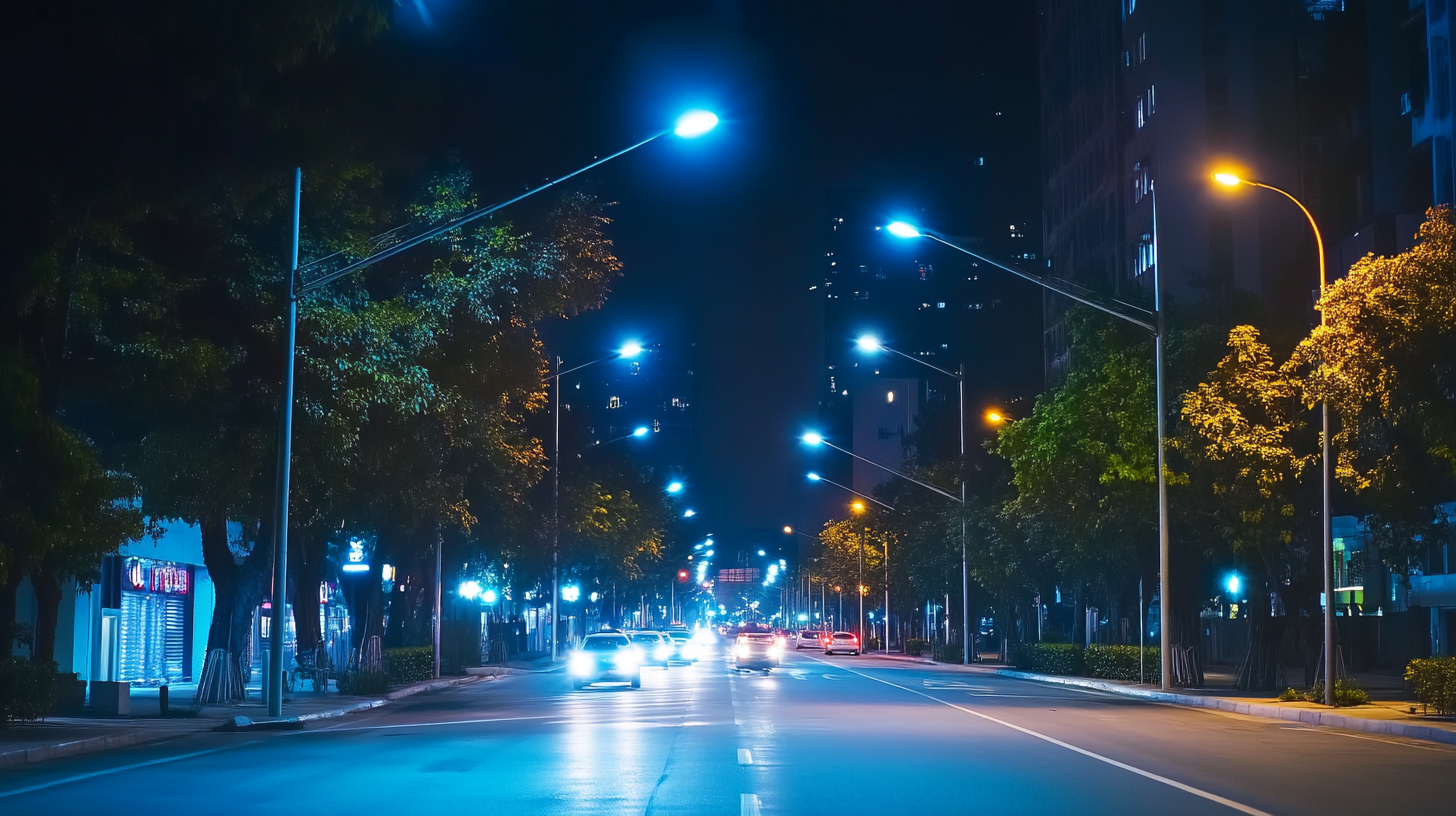Choosing Top Manufacturers for the Best LED Street Light Based on Industry Standards and Data
As urbanization continues to rise globally, the demand for efficient and sustainable lighting solutions has never been more critical. LED street lights, which consume up to 75% less energy than traditional incandescent bulbs, are becoming the preferred choice for municipalities aiming to reduce their carbon footprint and operational costs. According to a report by the U.S. Department of Energy, street lighting accounts for nearly 38% of total energy used by all outdoor lighting, highlighting the importance of selecting high-quality LED street lights that meet industry standards. Furthermore, a study by MarketsandMarkets projects that the LED street lighting market will reach $16.8 billion by 2025, driven by advancements in technology and increasing awareness of energy efficiency. This blog aims to guide readers in choosing top manufacturers for the best LED street lights, focusing on industry standards and data to ensure optimal performance and reliability.

Identifying Leading Manufacturers in the LED Street Light Market: Key Considerations
When selecting top manufacturers for LED street lights, it is essential to identify leading companies in the market that adhere to industry standards. Key considerations include product quality, innovation, and compliance with environmental regulations. A thorough evaluation of manufacturers should involve looking into their history, reputation, and advancements in technology. The best manufacturers often provide robust warranties and support, ensuring reliability for urban infrastructure.
**Tip:** Research manufacturers' certifications, such as ISO and DLC, which demonstrate their commitment to quality and energy efficiency. Additionally, reviewing customer testimonials can offer insights into the real-world performance of their products.
Another vital factor is the versatility of the LED street lights offered. Top manufacturers typically provide customizable solutions to meet specific municipal needs, including different lumen outputs, smart technology integration, and adaptive lighting features.
**Tip:** Consider manufacturers that showcase their products through real projects or case studies, as this can reveal their capability in designing lights that serve various urban environments effectively.
Choosing Top Manufacturers for the Best LED Street Light Based on Industry Standards and Data
| Manufacturer Type | Market Share (%) | Annual Revenue (Million $) | Warranty Period (Years) | Efficiency (lm/W) |
|---|---|---|---|---|
| Established Manufacturer | 30 | 500 | 5 | 120 |
| Emerging Manufacturer | 20 | 200 | 3 | 100 |
| Large-scale Manufacturer | 25 | 600 | 7 | 130 |
| Niche Manufacturer | 15 | 150 | 4 | 110 |
| Innovative Startup | 10 | 80 | 2 | 95 |
Evaluating Industry Standards: What Defines High-Quality LED Street Lights?
When evaluating high-quality LED street lights, several industry standards play a crucial role in determining their efficacy and durability. According to the International Dark-Sky Association, LED street lights should meet specific lumen output requirements to ensure sufficient illumination while minimizing light pollution. Typically, a lumen output of 5,000 to 10,000 lumens is recommended for urban streets, enhancing visibility and safety for both pedestrians and drivers.
Another essential factor is the Correlated Color Temperature (CCT), which measures the color of the light emitted. Research by the U.S. Department of Energy indicates that a CCT of 3000K is optimal for street lighting, providing a balanced white light that improves visibility without causing glare.
Furthermore, the energy efficiency of LED street lights, quantified by their wattage and lumen efficacy, is critical. Reports show that high-quality LEDs can achieve lumens per watt (LPW) ratings exceeding 100, making them significantly more efficient than traditional sodium lamps, which typically fall between 35 to 80 LPW. These metrics not only ensure compliance with industry standards but also contribute to reducing operational costs and energy consumption over time.
Comparative Analysis of Energy Efficiency Ratings for Top LED Street Light Models
The adoption of light-emitting diode (LED) technology has revolutionized street lighting, aligning perfectly with the growing demand for sustainable energy solutions. Recent industry analysis shows that LED street lights can achieve energy savings of up to 75% compared to traditional lighting technologies. This substantial reduction not only lowers operational costs but also contributes to a meaningful decrease in carbon emissions, supporting cities' goals for a cleaner environment.
When comparing leading LED street light models, energy efficiency ratings play a critical role in determining the best options for municipal projects. According to the latest data, top-performing models exhibit efficacy ratings exceeding 150 lumens per watt, enabling maximum illumination with minimal energy consumption. Furthermore, the lifespan of these advanced products often exceeds 50,000 hours, significantly reducing maintenance needs and lifecycle costs.
As municipalities assess their lighting strategies, leveraging comprehensive data on energy efficiency will be essential in selecting the best solutions that meet industry standards while paving the way toward a net-zero future.

Understanding the Role of Lumens and Wattage in Optimal Street Lighting Solutions
When selecting LED street lights, understanding lumens and wattage is essential for achieving the optimal lighting solution. Lumens measure the amount of light produced, while wattage indicates how much energy is consumed. According to the U.S. Department of Energy, LED street lights can deliver the same amount of light as traditional lighting while using 30-50% less energy. This efficiency translates not only to reduced energy costs but also less heat generation, making LED lights a safer choice for public spaces.
Tip: When evaluating LED street lights, always check the lumens per watt (LPW) ratio. A high LPW indicates better energy efficiency, meaning you can achieve the desired brightness with lower wattage. For instance, an LED street light that provides 10,000 lumens at 100 watts has an LPW of 100, showcasing excellent efficiency.
Furthermore, considering the specific requirements of your installation area is vital. Factors such as the height of the light pole and the desired brightness for pedestrian safety must align with the wattage and lumen output of the LED lights. Industry reports suggest that maintaining an average of 2-3 footcandles of illumination on roadways enhances visibility and safety while keeping energy consumption minimal.
Tip: Always consult with manufacturers or industry experts to analyze data-driven lighting designs tailored to your locality's needs. This ensures compliance with local regulations and maximizes benefits from your street lighting system.

Exploring Market Trends: The Future of LED Street Lighting Based on Data and Innovations
As cities strive for sustainability and energy efficiency, the future of LED street lighting appears promising, driven by innovative technologies and evolving market trends. The transition from traditional lighting to LED solutions not only reduces energy consumption but also enhances public safety through improved visibility. Recent data underscores a significant shift towards smart LED street lights, which integrate IoT capabilities, allowing for real-time monitoring and adaptive lighting based on traffic conditions. This evolution is paving the way for smarter urban infrastructures, where lighting systems can communicate with other city services to optimize energy use and maintenance schedules.
Market trends indicate a growing demand for LED street lights equipped with advanced features, such as solar power capabilities and motion sensors. As municipalities increasingly prioritize eco-friendly initiatives, the adoption of these innovative lighting solutions is expected to rise. Manufacturers are responding to this trend by investing in research and development to create products that not only meet industry standards but also exceed consumer expectations. The combination of data-driven insights and technological advancements is shaping the future of LED street lighting, making it a vital component of smart cities globally.
